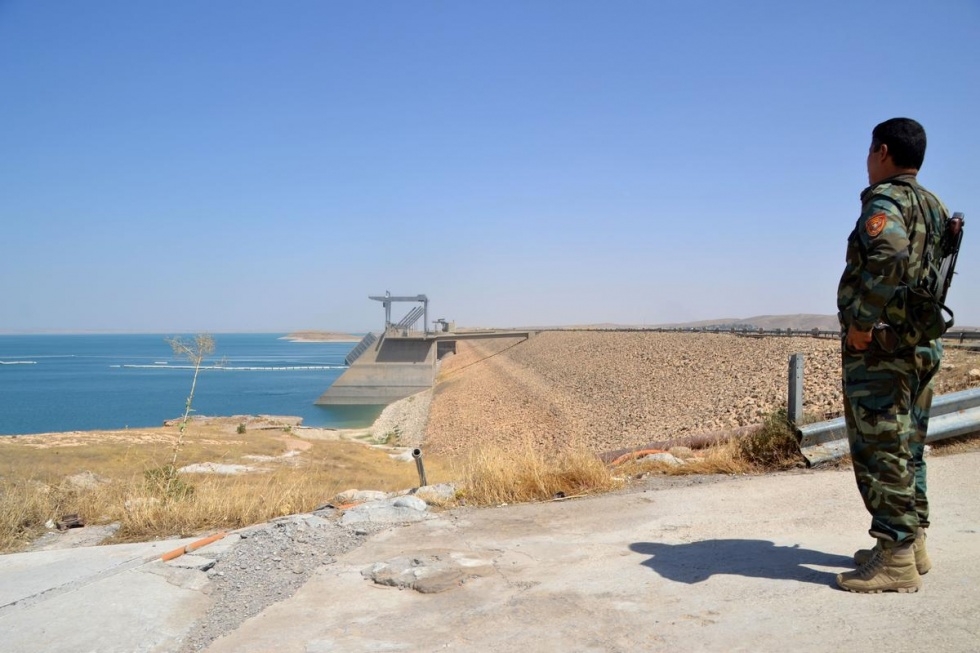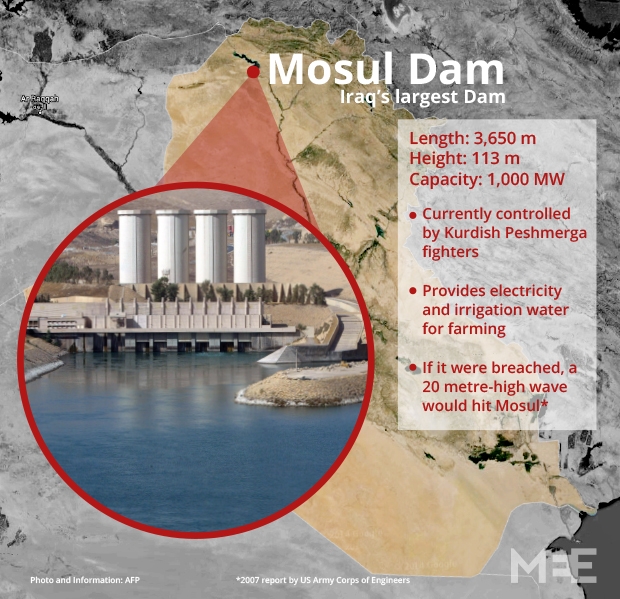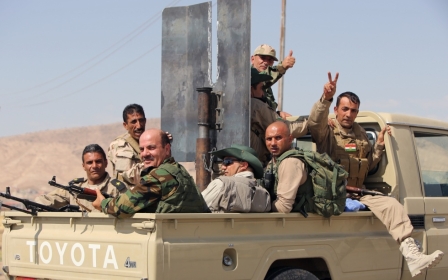Mosul dam: A life source in northern Iraq

The Mosul dam is the biggest in Iraq and a strategic site that provides water and electricity to more than a million people in the north of the country.
Islamic State (IS) extremists seized the dam on 7 August but Kurdish peshmerga fighters took it back on Sunday with support from US air strikes.
Completed in 1984, it suffers from structural problems that caused the US Army Corps of Engineers to once call it "the most dangerous dam in the world," an accusation rejected by Iraqi authorities.
It is built on water soluble soils that must be constantly reinforced to prevent a collapse that could send a wall of water 20 metres (65 feet) high surging towards Mosul, a city of some 1.7 million inhabitants.
The dam lies about 50 kilometres (30 miles) north of Mosul on the Tigris river and can provide up to 1,010 megawatts of electricity according to the BBC, which cited the Iraqi State Commission for Dams and Reservoirs.
A 2007 study by US inspectors rated its output at a more modest 750 megawatts, said then to be enough power for 675,000 Iraqi homes.
The dam also holds back more than 12 billion cubic metres (425 billion cubic feet) of water needed for drinking and irrigation throughout the Nineveh province, and forms part of a regional flood control system as well.
One of former Iraqi dictator Saddam Hussein's prestigious projects, the dam is the fourth largest in the Middle East according to an investment study presented to the Organisation for Economic Co-operation and Development (OECD) in 2010.
The main dam is 3.4 kilometres (2.1 miles) long and stands 113 metres (370 feet) high according to an October 2007 report by the US Office of the Special Inspector General for Iraq Reconstruction.
Construction required approximately 37.7 million cubic metres (1.3 billion cubic feet) of materials, mainly earth and concrete.
That paper and the study presented to the OECD underscored the dam's structural instability, because it was built on gypsum and limestone soils that erode with exposure to water, leaving cavities underground.
Leaks must be filled almost constantly with grout, estimated in 2007 at 200 tonnes per year.
Since US forces invaded Iraq in 2003, the United States has invested more than $30 million in surveillance and maintenance by Iraqi personnel, the BBC said.
Iraqi officials dismissed the US report as alarmist, however, with the dam's manager telling AFP at the time that "the overall structure is sound."
The OECD report three years later nonetheless concluded that "a need for total reconstruction cannot be ruled out."
New MEE newsletter: Jerusalem Dispatch
Sign up to get the latest insights and analysis on Israel-Palestine, alongside Turkey Unpacked and other MEE newsletters
Middle East Eye delivers independent and unrivalled coverage and analysis of the Middle East, North Africa and beyond. To learn more about republishing this content and the associated fees, please fill out this form. More about MEE can be found here.





